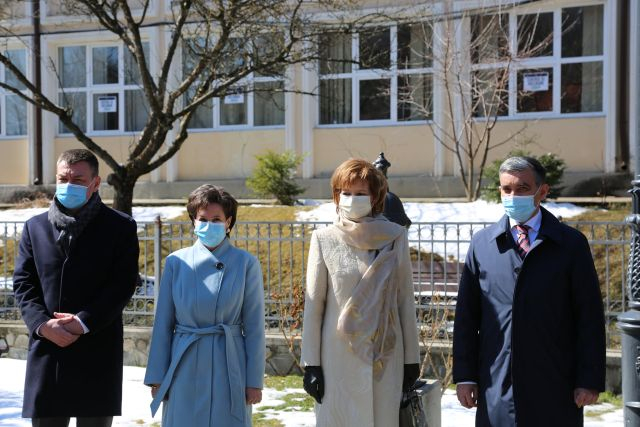140th Anniversary of Romanian Monarchy
The political map of Europe was updated in 1881, gaining what became the Kingdom of Romania

Steliu Lambru, 07.06.2021, 11:35
The political map of Europe was updated in 1881, gaining what became the Kingdom of Romania, a new political structure, which was at least half a millennium in coming for the majority of its inhabitants. However, its recent past was just that, very recent. The idea of a state outside the Carpathian arc had circulated sporadically before, imagined in various forms, more or less feasible. By the end of the 18th century, the idea of Dacia, meaning the two Romanian principalities together, was marginally mentioned in the correspondence of Russia’s Czarina Catherine the Great and Austrian Emperor Joseph II. However, by the half of the 19th century, the idea of a Romanian state started getting clearer. By the tenuous effort of the elite of the two Romanian principalities, which co-opted the mass of peasants and city dwellers to the idea of uniting Moldavia and Wallachia into a state, the idea of forming a Kingdom of Romania gained clarity, and got closer to reality. An idea that reinforced the initiative was the idea of a pan-European Danube river as a free navigation channel for the entire continent. In fact, even before the union of the Romanian principalities in 1859, they were referred to as the Danubian Principalities. However, in 1881, Carol of Hohenzollern-Sigmaringen, ambitious prince of the former United Principalities, became the first king in the new Kingdom of Romania. The date of May 10, the day Carol came to Romanian lands in 1866, meant a new beginning for Romanians, a good beginning after a long period of incertitude.
Carol I’s reign, between 1866 and 1914, was long and fruitful. This was by no means a given, as the new status of the country was obtained with great difficulty. Historian Alin Ciupala, with the University of Bucharest, spoke to us about the first stage in the reign of the future king, between 1866 and 1871, as a period of transition, which was at the time seen with reservations:
“Outside the Romanian political class, Carol was seen by the populace rather with indifference, because he was an unknown, a German Catholic prince, a foreigner for most. However, the political elite put their hopes in him. After the disillusionment that was the reign of Alexandru Ioan Cuza, they put great hopes into the reign of the future King Carol I. At the same time, we have to say that the ruling prince had a real shock when arriving in Bucharest. Later on, consort Queen Elizabeth, with a dollop of humor, recalled his arrival in the capital, after a long, tiring, and risky trip. She recalled the disappointment he felt on arrival. Compared to German cities, Bucharest was downright provincial. His official residence, the Golescu complex in Bucharest, was far from princely. Getting over the momentary disappointment, Carol adapted, and managed to get over this bumpy beginning.
The 1866 constitution, one of the most up to the times back then, was modeled on the Belgian one, reason for which Romania was known at the time as the ‘Belgium of the Orient’. That constitution, a key element for the newly founded state, was ready right from the start of his reign. Here is Alin Ciupala:
“Upon his arrival in the country, the constitution was almost ready. Romanian politicians had made considerable efforts, and had set aside their differences. It was voted in by the Constituent Assembly, and came into effect. First of all, right from the start, Romanian politicians wanted to present the future king with a political and institutional reality, because they wanted to avoid the situation that emerged during Cuza’s reign. They wanted to set up a constitutional monarchy from the get go, a system that very precisely set the attributions of the monarchy as an institution. Secondly, Romanian politicians felt pressure from the international context and the diplomatic complications caused by Cuza’s dethroning. The great powers had finally recognized the union of Moldavia and Wallachia only during Cuza’s reign. After February 11, 1866, Turkey and Austria demanded the separation of the Principalities, in order to get back to the situation from before 1859. Romanian politicians had to settle quickly this domestic crisis with foreign complications.
The climax in the difficulties of the transition was the dynastic crisis of 1871, when Prince Carol was about to hand in his abdication. However, the emergence of the Lascar Catargiu government of Conservatives, managed to carry Romania through and take determined steps towards their aims. Some historians say that, in fact, getting over the 1871 moment was the decisive turn in Romania’s modern history. Romanians had taken advantage of the Crimean War of 1853-1856 in order to make a credible offer to European offers, which led to the union of 1859. Led by Carol I, they did not miss a beat, such as the Russo-Turkish War of 1877-1878, when the fought fiercely for their independence. 140 years ago, on May 10, 1881, the last step was taken, and the Kingdom of Romania became a legal reality, as well as a factual one.





























